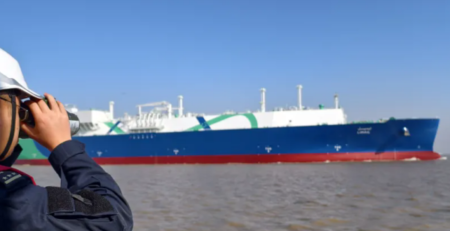Avoiding 3PL Failure: Five Critical Pitfalls That Can Derail Logistics Outsourcing Strategies

By Eva Richardson | The Logistic News | March 25, 2025
With global supply chains growing more complex, many companies are turning to third-party logistics providers (3PLs) to increase flexibility, reduce costs, and access expertise. But for all the promise outsourcing holds, logistics leaders are discovering that success with a 3PL partner is far from guaranteed.
According to industry analysts and recent case studies, up to 40% of logistics outsourcing arrangements fail to meet expectations, often due to mismatched priorities, misaligned communication, or poorly structured contracts. In 2025, as 3PL relationships become more strategic, avoiding these common pitfalls is more critical than ever.
Here are five frequent traps companies fall into when outsourcing logistics functions—and how to navigate around them.
1. Unclear Goals and Success Metrics
One of the most common causes of 3PL disappointment is a lack of clarity about what success looks like. Too often, companies enter outsourcing agreements without defined KPIs, cost benchmarks, or service level expectations.
Without mutual understanding of deliverables—whether it’s improved OTIF performance, lower transportation costs, or increased inventory visibility—both sides can drift into operational misalignment.
Best practice: Before contracting, define short- and long-term goals, assign ownership for key metrics, and agree on how performance will be measured and reviewed.
2. Underestimating Change Management Needs
Outsourcing logistics isn’t just about shifting tasks—it’s about transforming how internal teams operate. Many companies fail to prepare their staff for the process changes, system integrations, and cultural shifts that come with involving an outside partner.
Resistance often emerges from in-house teams worried about job security or workflow disruption.
Best practice: Treat outsourcing as an internal change management project. Communicate early, involve affected teams in planning, and provide adequate training to support smooth transitions.
3. Choosing Based on Cost, Not Capability
While cost reduction is a key motivator for outsourcing, choosing a 3PL solely based on price is a short-sighted move. A low-cost provider that lacks scalability, sector expertise, or technology compatibility may cost more in the long run due to missed SLAs, poor visibility, or damaged customer relationships.
Best practice: Evaluate potential partners based on capability fit, technological alignment, cultural compatibility, and track record in your specific industry—not just RFP pricing.
4. Neglecting Contract Flexibility
Markets change. So do customer demands, volumes, and trade policies. Yet many outsourcing contracts are rigid and fail to include clauses that allow for scope adjustments, volume surges, or KPI revisions.
A static contract can turn into a liability during market disruptions—leading to service breakdowns or escalating costs.
Best practice: Build flexibility and review checkpoints into contracts. Include terms for renegotiation, scalability, and performance recalibration as business needs evolve.
5. Lack of Governance and Relationship Management
Successful 3PL relationships require ongoing governance, not just annual performance reviews. Companies often assume the contract itself will manage performance, but real success depends on open communication, joint problem-solving, and accountability on both sides.
Without structured touchpoints and escalation paths, small issues can become major setbacks.
Best practice: Establish a joint governance model with scheduled reviews, scorecards, and executive oversight. Invest in relationship building—because trust and transparency are as important as any KPI.
Final Thought
Outsourcing to a 3PL can be a game-changer—or a costly mistake. The difference lies in preparation, partnership, and proactive management. As logistics networks grow more complex, companies must treat 3PL integration not as a hand-off, but as a strategic collaboration.
In 2025, the most successful logistics leaders won’t be those who outsource the most. They’ll be the ones who manage their partnerships best—with clarity, agility, and shared vision.
Eva Richardson
Senior Correspondent, The Logistic News
The post Avoiding 3PL Failure: Five Critical Pitfalls That Can Derail Logistics Outsourcing Strategies appeared first on The Logistic News.
Share this post
Related
Posts
MEXICO – Truckers’ roadblocks disrupt North American flows
Since dawn, several Mexican highways have looked more like improvised parking lots than logistical corridors. Groups of drivers block entire...
China Cargo Airlines launches new Paris–Shanghai freight service
China Cargo Airlines inaugurates a direct Paris–Shanghai freight flight, complemented by feeder road connections across Western Europe. This corridor meets...
Hudong-Zhonghua de Chine établit un nouveau record pour les livraisons de méthaniers
Chinese shipbuilder Hudong-Zhonghua Shipbuilding today delivered its ninth LNG carrier of the year, marking a new record for a single...
Onboard cameras: technology alone is insufficient in the absence of a true policy
The problem of cameras mounted on trucks was discussed at the Trimble Insight 2025 trade exhibition mainly from the aspect...




